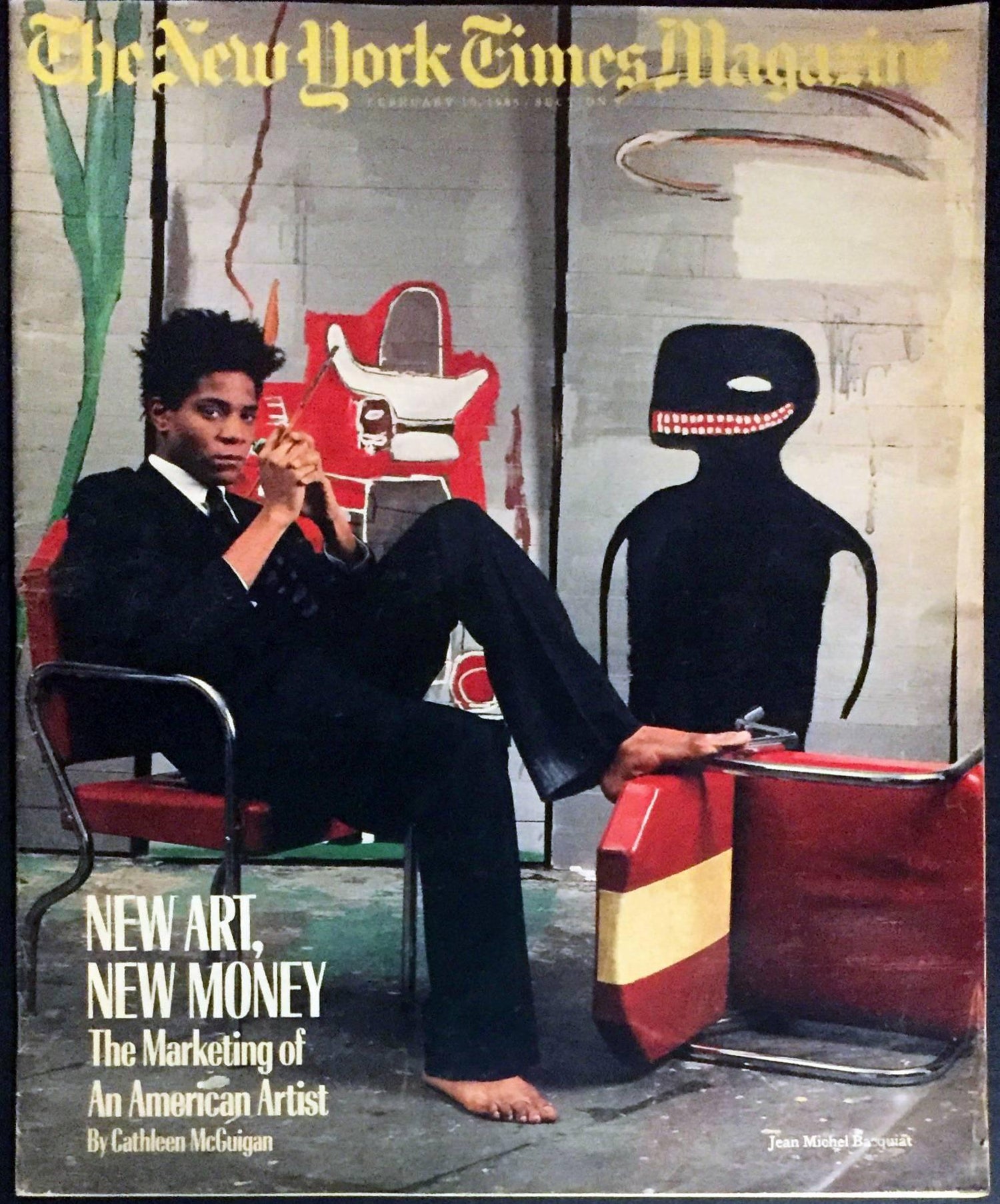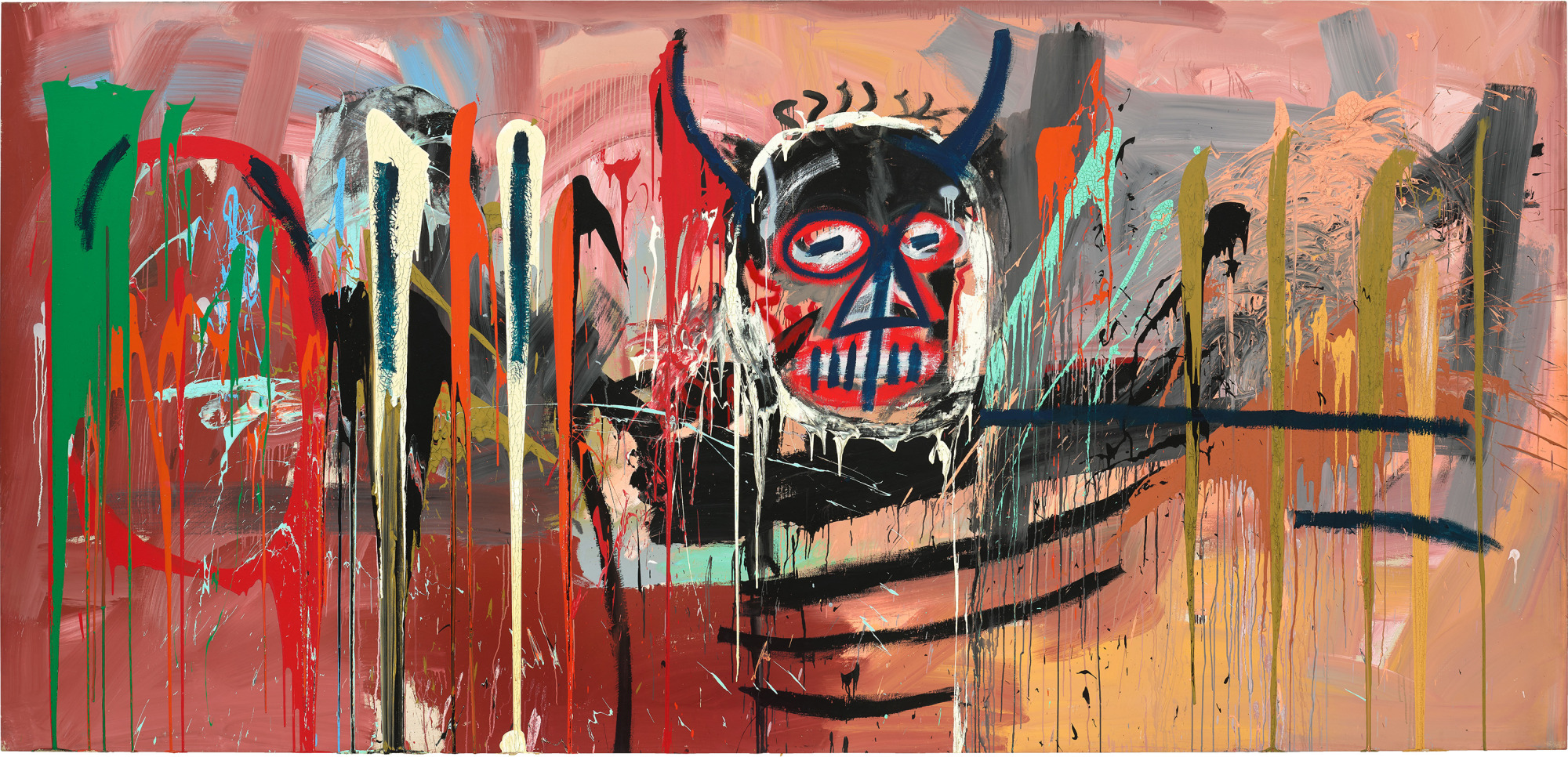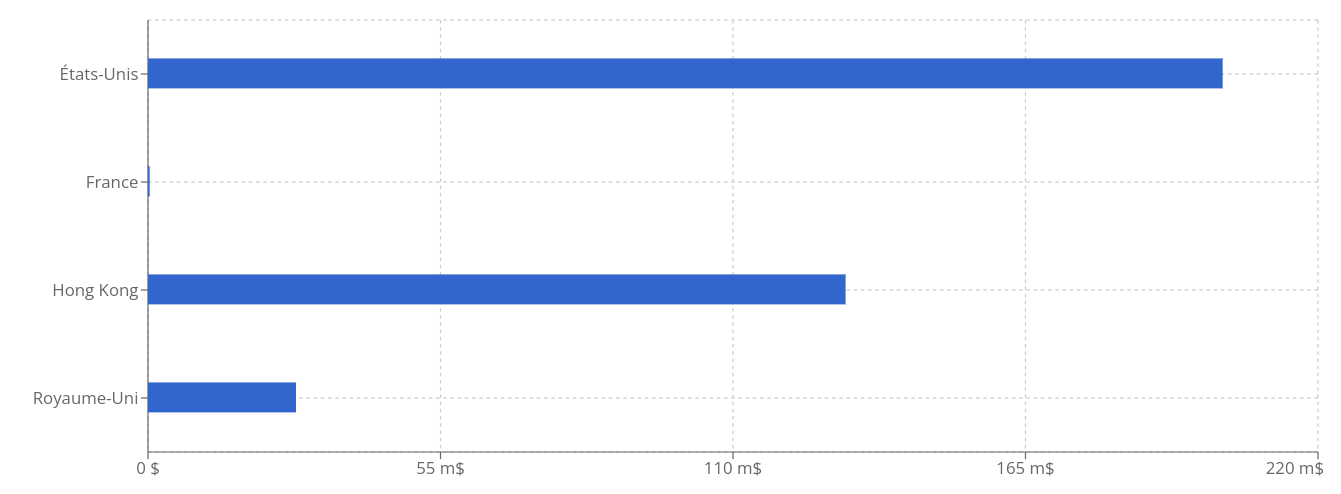Basquiat, still alive!
[2022年07月19日]
Jean-Michel Basquiat in his studio, New York, 10 février 1985, The New York Times Magazine
Jean Michel Basquiat, aka “SAMO” (for “SAMe Old shit”) traversed New York’s 1980s art scene like a shooting star. Already highly arresting at the time it emerged in the 1980s, his œuvre has lost none of its strength or its flamboyance more than thirty years later. The first black artist to appear on the cover of the New York Times, his work has been integrated into many of the finest international collections and his market is more dynamic than ever.
2021… a new auction peak
In 2021, the “Prince of New York” was the 2nd top-selling artist in the world for the first time over 20 years with an annual auction turnover of $439 million from 104 lots sold. Of these, only 22 were paintings, illustrating the scarcity of original works circulating on the market as well as the spectacular amounts they fetch when they do come up for sale.
Among the top results in recent years, two of his works have sold for over $50 million:
- Last May, Untitled (1982) was the highlight of a Phillips evening sale in New York where it fetched $85 million, the 3rd highest result ever hammered for one of Basquiat’s works. Measuring five meters wide, this spectacular canvas was offered with an estimate at around $70 million. Having acquired the painting for $57.3 million in 2016, the Japanese billionaire Yusaku Maezawa therefore pocketed a capital gain of $27.7 million in just 8 years!

Present value of the work Untitled (1982) Artprice Indicator®
In 2017, Maezawa purchased another Basquiat skull painting, Untitled for $110 million, setting the artist’s all-time record. As Basquiat was only 21 when he painted the 2 skull paintings, he was effectively the youngest ever artist to cross the $100 million threshold at auction.
- In last year’s major New York spring sales, Christie’s presented Basquiat’s In This Case (1983) depicting a skull on a red background (198 x 187 cm) with an estimate of around $50 million. The painting fetched $93 million, generating the artist’s 2rd best-ever result. Consigned for sale by a private collector who has remained anonymous since 2007, the canvas was presented publicly for the last time during an exhibition organized at the Fondation Louis Vuitton in Paris (2018 / 2019). The painting contains two dominant themes in Basquiat’s work: anatomy and the representation of Afro-American people. The same canvas was sold in November 2002 for just $999,500, barely more than a hundredth of the price paid less than 20 years later!

Jean Michel Basquiat, In this Case (1983)
During the pivotal years 1981 and 1982, Basquiat produced nearly 240 canvases and his works from this period have generated the bulk of his top auction results. Nowadays, the majority of his best results are hammered in New York, but last year a third of his annual auction turnover came from Hong Kong. With a total of $153 million (in Hong Kong), Basquiat was the Hong Kong market’s leading artist, ahead of Zao Wou-Ki. His 1982 painting Warrior sold for $41.7 million at Christie’s HK, the highest price paid for a Western work in Asia during 2021.

Geographical breakdown of Basquiat’s 2021 auction turnover © Artprice.com
One of the rare artists whose prices are super-resistant to crises, 2021 was a very prosperous year for Basquiat. And when he is not in the news for sales records at Sotheby’s or Christie’s, or for the numerous retrospectives dedicated to his work, Basquiat’s name has also been in the news in the context of a major police investigation into forgeries…
When top prices attract fraudsters…
The Orlando Museum of Art accused of exhibiting fake Basquiats
No less than 25 paintings attributed to Basquiat and exhibited in Florida were recently requisitioned by the FBI. These “never-seen-before” works of questionable authenticity were part of an exhibition titled Heroes & Monsters: Jean-Michel Basquiat, The Thaddeus Mumford, Jr. Venice Collection at the Orlando Museum of Art. The paintings, apparently created in 1982 by Basquiat in his Venice (L.A.) studio, were apparently sold to screenwriter and television producer Thad Mumford for the modest sum of $5,000, in cash and in person. For three decades, the works were apparently kept in Los Angeles warehouse, until 2012, when they were supposedly acquired for just $15,000.
However, their authenticity was questioned by specialists and former relatives of the artist, and according to some experts, the cardboard supports for the works were produced more recently than the period during which Basquiat is alleged to have painted them. The Orlando Museum’s Director told The Times newspaper “I have no doubt that these are Basquiat works. My reputation is also at stake”. The Times accompanied his remarks with several reports justifying their authenticity. Among them, a handwriting expert positively identified Basquiat’s signatures.
How do we know if “rediscovered”, “never-seen-before” or “missing” works by Basquiat are real or fakes? Since 2012, there is no longer a scientific committee to guarantee the authenticity of his work. Today, the only way to determine if a drawing or a painting by the artist is real is to know its provenance, its exact journey from dealer to dealer, its citation in reference document, its exhibition in museums and of course its appearances in auction sales.
If the 25 paintings can be definitively identified as authentic Basquiat works, Putnam Fine Art and Antique Appraisals estimates their total value at nearly $100 million! According to the New York Times, a positive outcome to the investigation would restore a slightly tarnished institutional legitimacy, and would provide better visibility to future buyers.
Unfortunately, these are not the only works to be questioned as Basquiat’s work has already been the subject of several counterfeits. As early as 1994, a number of paintings – later considered fakes – were in circulation, accompanied by fake provenance records. And just recently, in June, in the United States, an art dealer was arrested after selling numerous counterfeit works.
Art dealer arrested for counterfeit
Three months after the Orlando Museum affair hit the headlines, it was a Franco-Algerian art dealer, Daniel Elie Bouaziz, who was arrested for counterfeiting artworks. From his art gallery in Palm Beach, Florida, he apparently sold numerous works falsely attributed to major signatures like Warhol, Banksy and Keith Haring for a total value of nearly $22 million. Among these works, a copy of a Basquiat which Bouaziz sold for $12 million. Bouaziz maintains that “The provenance is that of Basquiat’s father, so there is not really any doubt about it”. However, this affirmation was quickly debunked by a former member of Basquiat’s now-defunct authentication committee who identified the painting as a fake. To pass off the counterfeits as originals, Bouaziz allegedly forged signatures and provided false provenance documents. Some of the forger’s victims have now been awarded compensation, while the recently arraigned forger has been released on bail. He faces up to 20 years in prison and a fine of up to $500,000, a trifle compared with the magnitude of his deception.
However, the counterfeits in circulation do not harm Basquiat’s market value. Perhaps these affairs even accentuate the fervor of collectors at the idea of owning an original work by the King of New York, an artist whose aura does not weaken but proves on the contrary to hit the headlines!




 0
0
